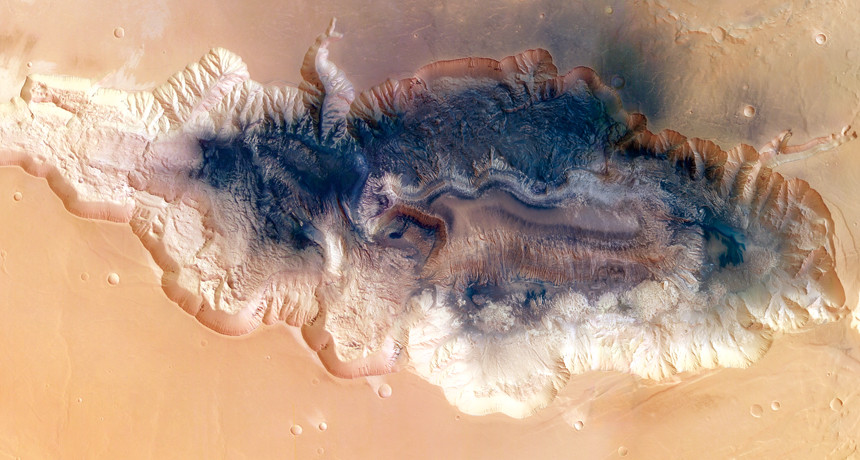A grander canyon on Mars
Hebes Chasma reflects Red Planet’s active past

New images of Hebes Chasma (shown) from the European Space Agency’s Mars Express spacecraft suggest that massive landslides may have shaped the huge trough.
ESA, DLR, G. Neukum/Freie Universität berlin







